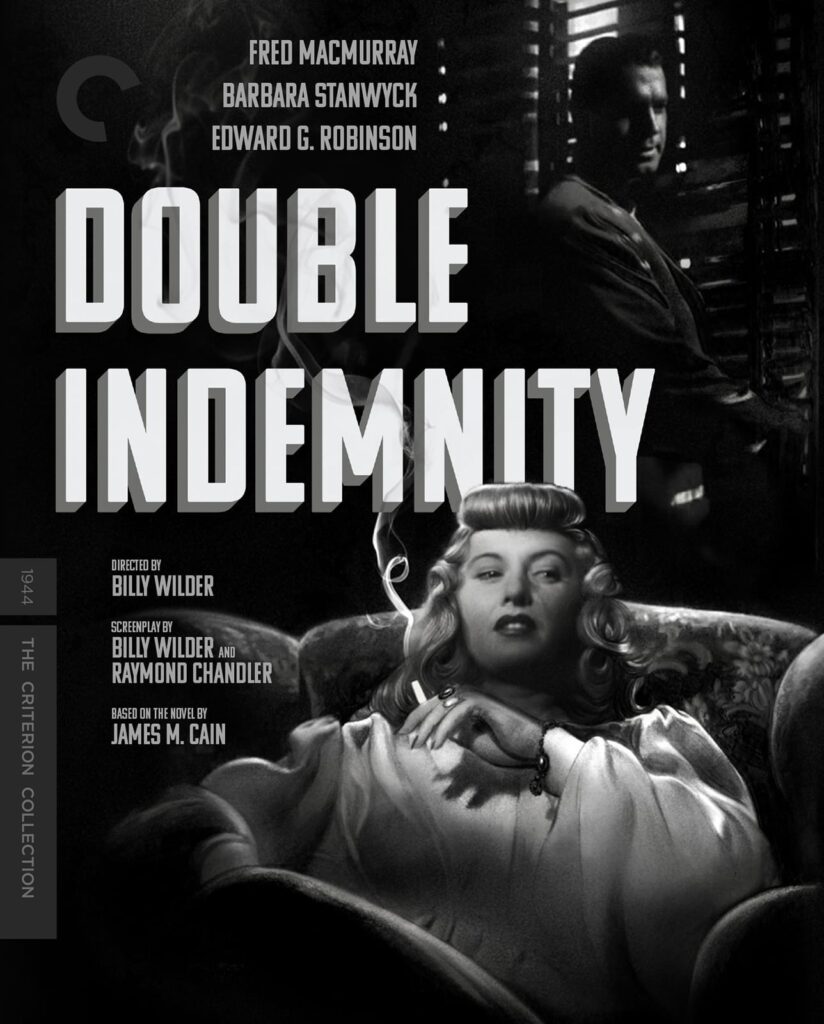Bitter, seedy, brooding, cynical — all words that can be used to describe the unforgettable Double Indemnity, a giant of silver screen cinema and perhaps the most genre-defining film of the ‘noir’ category. Based on James M Cain’s book of the same name and adapted by two other giants: Billy Wilder (Some Like it Hot) and the celebrated noir novelist and screenwriter Raymond Chandler, the film is bursting at its seams with 20th Century talent. And it shows on the screen. Barbara Stanwyck and Fred MacMurray, as Phyllis and Walter, deliver icy, stoic performances that drip with seduction and sleaze as they carry out their greedy plot to kill Phyllis’s husband for a life insurance payout.
“We’re both rotten.”
Double Indemnity (1944)
“You’re only a little more rotten.”
While the stylistic aspects of the film—the silhouetted blinds slicing across a room, the dark interiors, the charged clinch between a femme fatale and her broad-shouldered man in a perfectly tailored suit—can be ascribed to director Billy Wilder, its overarching plot and themes are pure Cain. In Double Indemnity, Cain unmasked the true nature of the American Dream: that the pursuit of happiness has to come at someone else’s cost.
Revealing the greed and violence bubbling away beneath a thin veneer of workaday American propriety became Cain’s trademark. The best stories were no longer to be found in Ancient Rome, Transylvanian castles, or untouched tropical islands. Instead, they were on the front covers of local news; they were playing out in the preened homes of the American suburbs.

The other classic adaptation of Cain’s work, The Postman Always Rings Twice, adapted in 1946 (and again in 1981), was similarly successful. Drawing out the same themes of adultery, violence, and greed, the film bobbed and weaved around the censorship of the Hays Code and presented a similarly depraved vision of America. And American audiences, perhaps recognizing their most hidden desires in these shocking stories, couldn’t get enough.
These adaptations, and the books they were based on, laid out a blueprint for thrillers that have never truly been undermined since. The elements of Cain’s storytelling are seen in the DNA of some of the most successful American films and TV shows of the 20th Century. Whether it’s Breaking Bad, The Sopranos, or even Desperate Housewives, Cain’s formula of injecting the highest form of greed, depravity, and violence into the most familiar environments has continued to enrapture audiences almost a century after the publication of his first book.
Plainly, the world of American drama is much indebted to the imagination of James M Cain, and his dark-tinged perceptiveness. Since the publication of his books, there have been any number of fatal relationships, cynical plots, and dingy murders presented to audiences but perhaps none are so distilled, incisive and timeless as his own.



